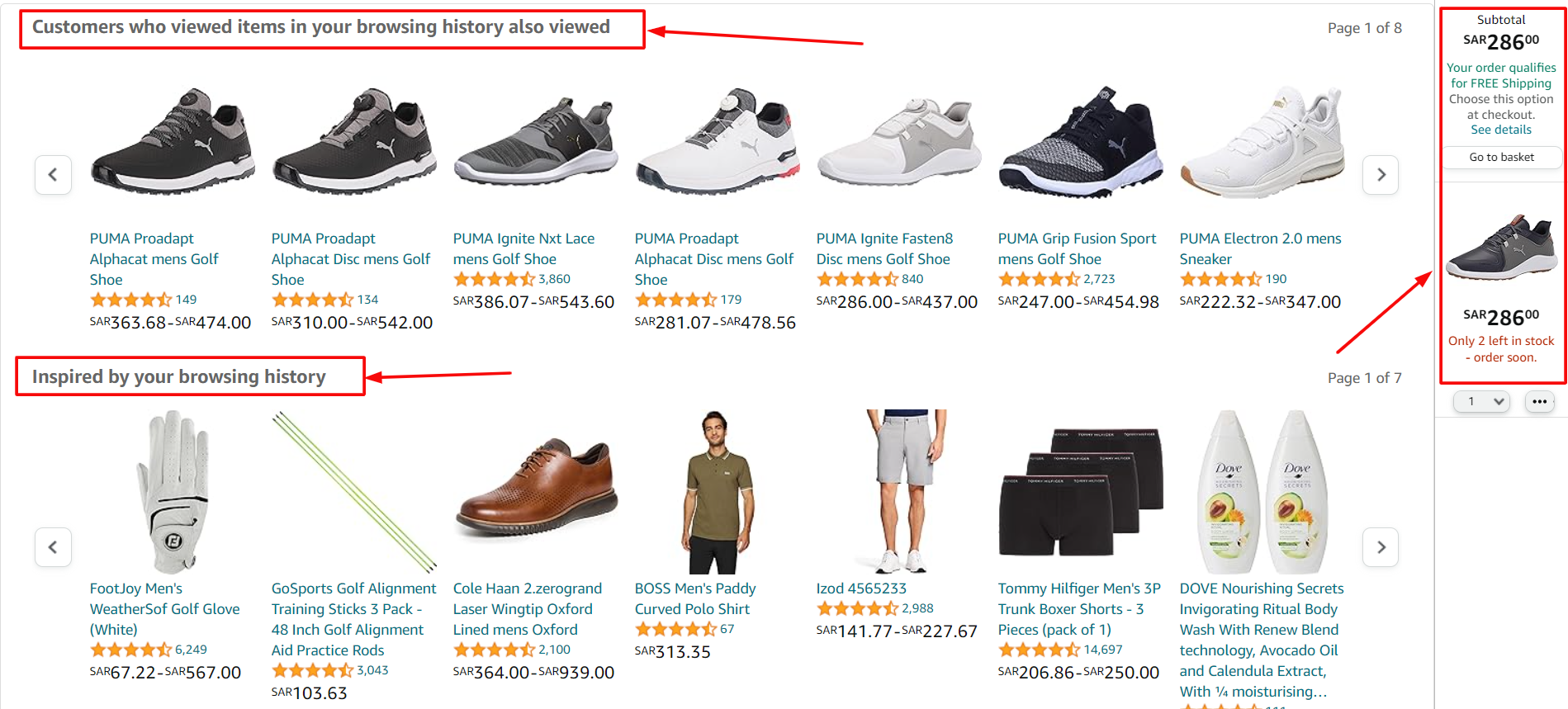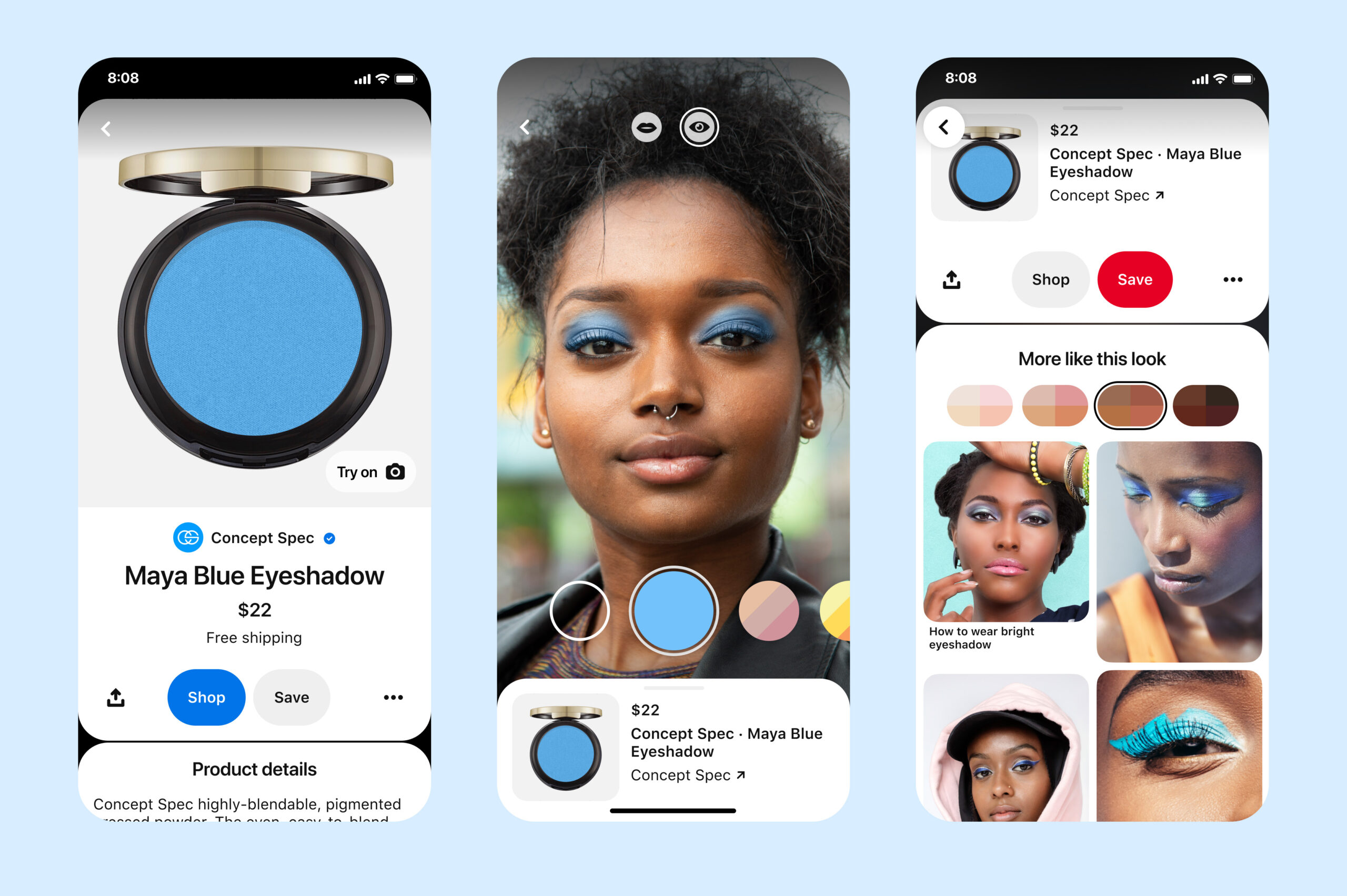According to the latest reports from McKinsey, focusing on the use of AI tools in emerging markets, such as Arab countries, the Middle East, and North Africa, reveals that:
- 9% of individuals typically use these tools for work-related purposes.
- 11% use them for both work and daily life.
- Approximately 20% rely on them entirely in their daily lives, including shopping and purchasing.
- 34% of people have used AI tools at least once to assist in specific tasks.
These statistics underscore the strength and importance of AI tools as an influential factor contributing to the success of various business activities.
Now, let’s explore together the latest AI trends in eCommerce in 2024 and how to leverage them for the benefit of your store.
Top 5 AI Trends in eCommerce in 2024
Before delving into the recent trends in artificial intelligence and machine learning in e-commerce, it’s essential to review a crucial indicator from the McKinsey report:
- 7% of retailers rely on various AI tools to accomplish various work tasks.
- 11% use them concurrently in both work and daily life.
- 40% have used these tools at least once for various purposes.
Given the significance of relying on artificial intelligence, let’s now discuss the key trends.
First: Recommendation Systems Enhancing Customer Shopping Experience
Recommendation systems, or Recommendation Engines, are advanced systems built on artificial intelligence and machine learning technologies. They collect, process, and filter data using machine learning algorithms to predict products and services shoppers are interested in based on their previous shopping journeys.
Most recommendation systems utilize two types of data filtering processes or a combination of both:
- Collaborative Filtering: This system generates recommendations by comparing the behavior of some customers with others who have similar preferences.
- Content-Based Filtering: This recommendation engine provides suggestions based on specific customer data, such as previous purchases or searches.
These systems efficiently contribute to improving and customizing the shopping experience for customers, tailoring it to their needs and preferences. This enhances customer enjoyment during their shopping journeys and boosts sales on your online store.
Amazon is a prime example of the effective use of recommendation engines, offering more than 5 different suggestions as soon as a product is placed in the shopping cart.
Here are some tips to leverage AI-based recommendation systems for your business:
- Use AI-based recommendation systems to display related products based on customers’ interests and purchasing behavior. For example, if a customer buys shoes, you can recommend other products like socks or related accessories.
- Utilize recommendation systems to guide customers to suitable products while browsing your online store. For instance, display lists such as “Others Also Bought” or “Best Sellers” to encourage exploration and increase purchase opportunities.
- Embrace advanced technologies like clustering and deep learning to enhance the accuracy of recommendation engines, thus improving the shopping and purchasing experience for customers.
Second: Chatbots
Chatbots are interactive interfaces that allow users to communicate with businesses to solve issues or obtain information about products or services.
These bots rely on advanced technology in AI and natural language processing to achieve interactive and intelligent responses to users’ inquiries and requests.
Chatbots are beneficial for e-commerce stores in various ways, including:
- Improving the shopping experience by providing necessary assistance and guidance to complete the purchase process efficiently.
- Accelerating customers’ decision-making by offering immediate and comprehensive answers to their product-related inquiries, thereby increasing sales.
- Cutting costs associated with employing a large number of customer service representatives to respond to queries and provide support to shoppers.
One notable example of the effectiveness of chatbots for e-commerce is Sephora’s Virtual Artist. It allows customers to virtually experience various makeup products, providing a personalized and interactive shopping experience.
The Virtual Artist analyzes customer preferences and facial features, offering suitable product recommendations and immediate assistance on selected products.
Third: Visual and Voice Search Engines
Not everyone excels at expressing what they want through writing, so visual and voice search engines based on artificial intelligence are emerging trends in eCommerce.
Visual search engines, integrated into e-commerce websites, rely on image recognition technologies and complex algorithms to allow users to search for products using images. For example, a shopper can take a picture of a product they like, and the search engine analyzes the image, providing results related to similar products or available offers.
Another example is Pinterest Lens, which is released in 20214 allowing users to explore related products and creative concepts through images on the platform. Unlike Google Lens and Bing Visual Search, its search is limited to Pinterest images.
Over time, Pinterest Lens has introduced new features, such as the Shop tab, guiding users to a feed of purchasable Pins. Widely used for finding home decor, fashion inspiration, and recipes.
In terms of voice search, it enables users to perform search and shopping operations using voice commands, relying on natural language processing and converting speech to text to understand and execute shoppers’ requests. For instance, consumers can ask about a specific product, request recommendations, or initiate purchase processes through voice commands.
To maximize the benefits of these technologies for your store and attract different audience segments, enhancing the shopping experience and making it more enjoyable and convenient, consider these tips:
- Focus on improving the quality of the images used in your store, displaying them from multiple angles to assist visual search engines in recognizing products better and presenting them to users with similar interests.
- Provide clear and comprehensive descriptions for your products and use relevant keywords to help increase the chances of your products appearing in relevant search results.
- Develop your store to offer a distinctive user experience by integrating visual and voice search engines, making the process smooth for shoppers to search for products and make purchases using images or voice commands.
Fourth: Predictive Analytics for Inventory Management
The same McKinsey study mentioned earlier found that businesses investing in artificial intelligence and machine learning technologies can achieve up to 90% accuracy in predicting demand compared to only 60% for traditional demand forecasting.
Effective inventory management is crucial in e-commerce, and artificial intelligence in 2024 will play a pivotal role in enhancing this process, making it more efficient and effective.
Retailers can rely on predictive analytics supported by artificial intelligence to accurately forecast consumer demand, reduce overstock and stockouts, and improve supply chain efficiency. This contributes to cost savings for stores and enhances the shopping experiences for customers.
To keep up with this significant development:
- Focus on investing in artificial intelligence and machine learning technologies to build predictive models for analyzing data and forecasting future consumer demands on products.
- Develop a clear strategy for inventory management based on artificial intelligence, considering different factors affecting supply and demand.
- Seek external sources to develop machine learning models to achieve maximum benefits for your business.
Fifth: Fraud Detection and Risk Reduction
E-commerce websites are always susceptible to fraudulent activities, but with the application of advanced artificial intelligence (AI) techniques, such operations can be detected and their risks minimized. How does this work?
Advanced machine learning algorithms analyze transaction data in real-time to identify fraudulent activities and block them. This involves scrutinizing various factors, including:
- Customer Data: Such as IP address, email address, date of birth, and credit card information.
- Financial Transaction Data: Involving transaction value, product type, payment method, and purchase time.
- Location Data: Relating to the customer’s location and the devices used for browsing.
Based on these factors, algorithms can identify unusual patterns that may indicate fraudulent operations, such as:
- Use of a stolen credit card.
- Large purchases by a new customer.
- Purchases from an unfamiliar website.
This not only protects companies from financial losses but also contributes to enhancing customer trust in the store, ensuring a fear-free shopping experience. Here are some expert tips to fully leverage these technologies and reassure customers in their shopping and purchasing experiences:
- Train AI algorithms on customized data from your store: This helps improve the accuracy of analysis and detection of more fraudulent activities.
- Regularly review fraud rules and controls: Stay updated on modern fraud techniques to enhance the effectiveness of the employed technologies.
- Provide transparent reports to customers: Sharing information about detected fraud operations helps build trust and loyalty to the brand.
So, how can you fully benefit from AI capabilities to increase sales?
According to recent reports, about 13% of businesses commonly use AI tools for e-commerce to improve conversion rates, revenues, product marketing, and enhance the offers provided.
Connecting your advertising campaigns and offers with machine learning models for data analysis and insights extraction is crucial for developing more effective promotions that encourage customers to make purchases.
- Utilize AI capabilities to analyze available data and understand market trends, patterns, and new opportunities to boost sales.
- Create predictive models to identify potential customers interested in your products or services, customize your marketing efforts, and contribute to conversions and revenue growth.
- Improve the shopping experience on your store by providing personalized content and product recommendations aligned with customer preferences.
- Make use of AI technologies to analyze data and determine dynamic pricing policies based on demand rates and market variables.
- Implement intelligent chatbot systems supported by AI to provide immediate and efficient customer support, guiding them through the purchasing process.
- Enhance your product pages with high-quality images and accurate descriptions using AI technology.
Also, rely on smart systems to improve shipping processes and order tracking, providing customers with accurate and immediate information about the status of their orders and ensuring timely delivery.
For example,
you can rely on the world-leading shipping gateway, OTO, designed with the latest unique and innovative technologies. It allows you to leverage AI capabilities and machine learning applications to automate shipments according to your specific rules.
By creating a free account on OTO, you can enhance your shipping, management, tracking, and retrieval processes, analyze them, and connect with over 200 local and international shipping companies, thereby making a qualitative leap for your store and enhancing its competitive value.
Final Thoughts
In recent years, we have witnessed the emergence of several new trends in artificial intelligence in the field of e-commerce, leading to significant changes in online shopping methods.
There has also been notable progress in using augmented reality and virtual reality to provide a more interactive and adventurous shopping experience. For instance, customers can shop through voice commands, experience products before purchasing them, and visit virtual stores without leaving their homes.
With this immense technological advancement, it is essential to reorganize your strategies to keep up with these dynamic changes, striving for growth, sustainability, and maximizing returns on investment.








